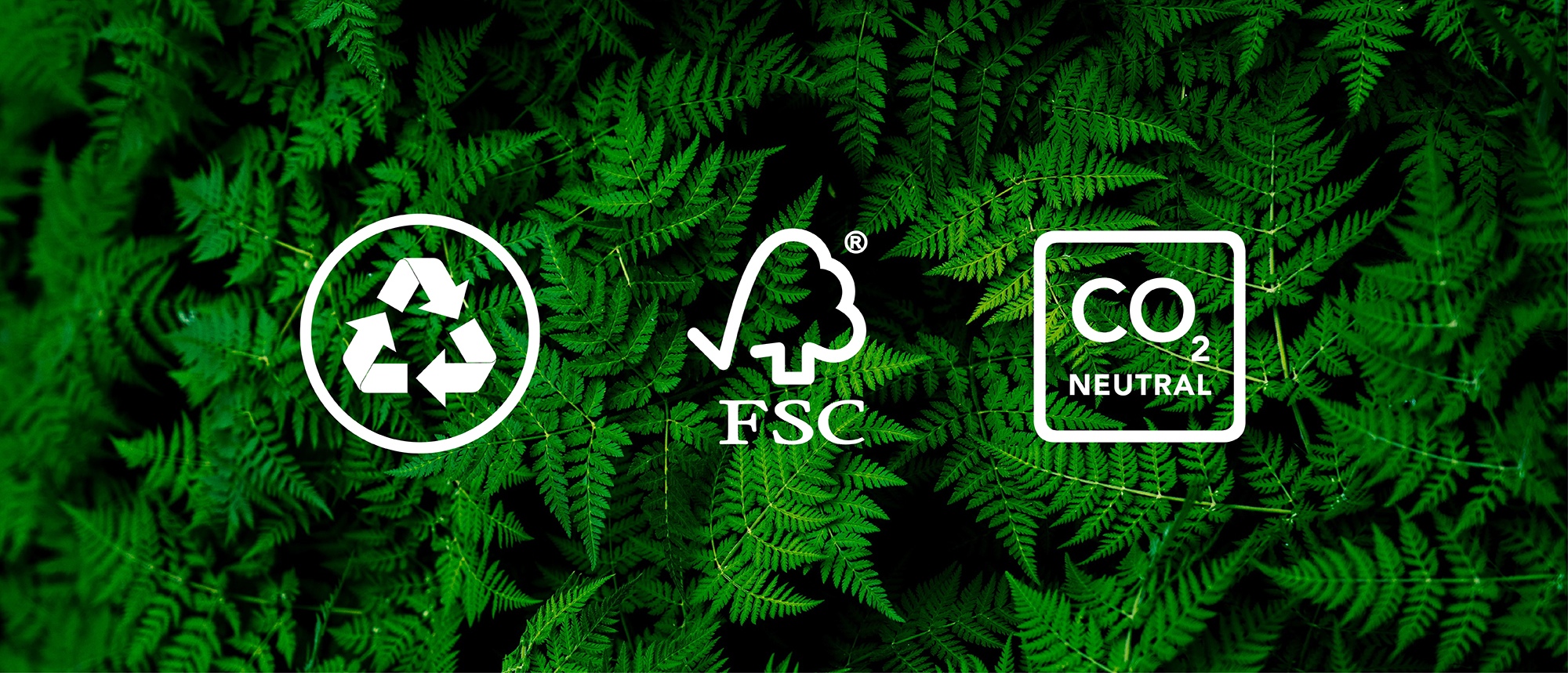
Sustainability in design
“There’s this very vulnerable planet of ours with finite resources. Architects and designers have, I think, a fair responsibility for conserving energy and materials and making things durable.”
– Robin Day, Industrial and Interior Designer
I love designing but I don’t love waste. As a designer, I try to be as “green” as possible through my work as an individual, and with clients. The shift in recent years has been towards the environmental and social impact of materials designers use, and so we have a duty to design responsibly.
There are a few simple steps we can take, and you’ll probably be familiar with a lot of them but it’s good to get the message reiterated. Here’s how I personally achieve this:
- Only printing when necessary in order to check proofs for colours, image and font legibility.
- Double-sided printing when possible to save paper and using black and white print mode if you are not checking colour, therefore, less colour inks are used.
- If printing from home, using recycled/recyclable paper and recyclable printing cartridges.
- Working with and supporting a local printing company, as I do (biggup to Kall Kwik, Ealing!), whom I can easily head over to, hence not having to take public transport or drive.
- Printing at a printing company that recycles their paper.
- A good printer will be well informed and be able to advise you on different sorts of paper stock. Ask whether they can source FSC approved paper, which stands for Forest Stewardship Council, an organization that works to promote the practice of sustainable forestry worldwide: https://www.mnn.com/money/green-workplace/stories/what-is-fsc-certified-paper. In some cases, the paper will be Carbon Neutral, which is an added bonus.
- Giving options to customers about using wipeable menus which are durable, for example, so they can be reused.
- Turning off your printer if you are not using it.
- Shutting down your computer, giving it a rest, just like your brain needing a rest during sleep.
Going digital
A majority of design is digitally marketed and shared, resulting in a higher reach to customers, whether on websites, social media or via email newsletters. Where possible, I encourage my clients to be sustainable and go digital, which subsequently cut costs. For example, designing e-brochures or e-books rather than printed brochures which can easily be added as a downloadable link to their website or shared with their customers via email newsletters.
When planning website design, I speak to my clients about the benefits of having a page based on the company’s sustainability pledge, and one step better, support it with facts and statistics. They may be actively sustainable within their organisation but not promoted it. Get the conversation going and ask clients upfront. It will benefit their brand identity in terms of transparency, help build loyalty and trust with their customers, whilst helping the environment and social causes.
Here are some facts and figures to show what consumers want from the hospitality industry. You can’t argue with this:
The majority (92%) of consumers expect operators to act sustainably, with reduced packaging (93%), food waste strategies (93%) and paper or metal straws (87%) topping the list of priorities, according to a survey by guest experience management expert HGEM. More than nine out of ten (94%) of respondents think better of a brand that acts sustainably, rising to 98% among 18 to 25-year-olds.
Of those who admitted their perception would change, more than half (53%) listed “the environment” as the reason, while a third admitted it was nice to see brands “trying to make a difference”.
More than four-fifths (82%) of respondents are more likely to choose a venue that proactively sources local produce, while almost half (45%) expect to see charity support or donations within a restaurant.
When it comes to operators best communicating their sustainability efforts, consumers listed on-premise (93%), social media (67%) and company website (61%) as the top three preferences.
HGEM founding director Sally Whelan said: “Consumers are becoming ever more aware of how their actions are having an impact on the environment and, as a result, their perception and behaviour towards brands is beginning to change. Sustainability is no longer a ‘nice to have’ for consumers, it’s an expectation. Those brands actively communicating their efforts have the potential to attract new customers and build loyalty with existing ones.”
Source: Paul Charity, Propel Info: http://www.propelinfonews.com/
An example I recently spotted of sustainability was when I ate at the renowned Coal Office in King’s Cross, London. I was impressed to see their menus were made from beer waste, and postcards made from recycled coffee cups. It was highlighted on their website and marketing collateral. It’s important to add that line saying what it’s made from, whether it’s FSC, Carbon Neutral or recycled. In addition to that, naming the local businesses the client works with work and being transparent about where they source their food and drinks from and which charities they donate to. It resonates well with the customer and makes them happy to give them their business.
Sustainability should be an ethos, rather than an extra. Look for inspiration, see what others are doing and bring ideas to the table knowing that every small part we play helps the bigger goal. It brings value to you as a designer, and to your clients’ business.








